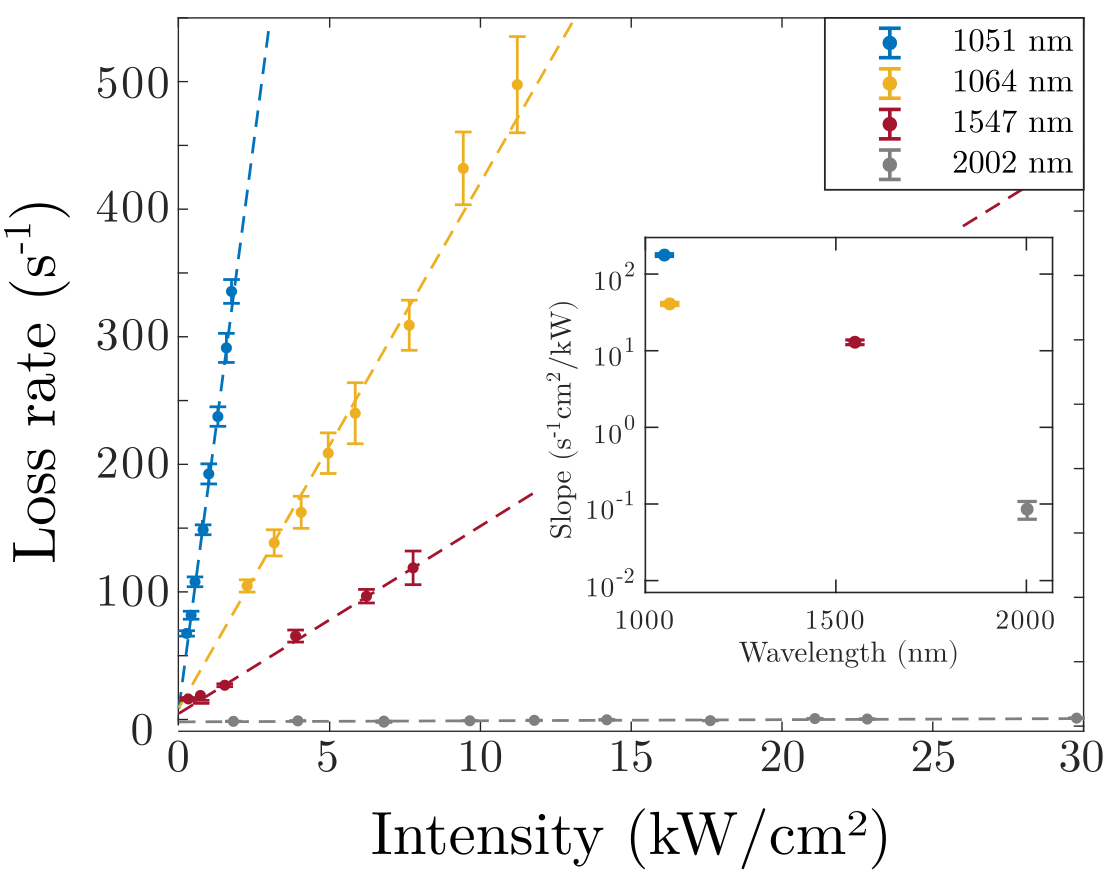Speakers
Description
We have studied the loss mechanisms in a sample of trapped ultracold bosonic Feshbach molecules formed from the fermionic isotopes $^{161}$Dy and $^{40}$K. Created by sweeping a magnetic field across a low-field Feshbach resonance at 7.29 G 1, the sample consists of approximately 7000 molecules at a typical temperature of 70 nK. The molecules are spatially separated from the remaining atomic cloud using a Stern-Gerlach technique while being held in an optical trap [2].
By measuring the lifetime of the molecules primarily in a 1064 nm optical dipole trap, we identified a dominant one-body loss contribution, proportional to the intensity of the trapping light and the closed-channel fraction of the Feshbach molecules. This suggests a one-photon coupling to electronically higher excited states of the molecular manifold. We therefore performed loss spectroscopy measurements at four different wavelengths. The linear dependence of loss rates on intensity was found to increase by two orders of magnitude, allowing us to isolate the two-body losses in the 1547 and 2002 nm traps.
We were then able to demonstrate Pauli suppression of collisional losses by a factor of four in the 1547 nm trap. At 2002 nm, despite a measured lifetime of 400 ms at 60 mG from the resonance, technical limitations prevented us to get closer from the resonance.
These results pave the way toward the realization of quantum-degenerate DyK molecules and exotic superfluid states derived from our mass-imbalanced fermion mixture.

Fig. 1: Linear dependence of the measured one-body loss rates on the intensity of the single-beam trapping light at four different wavelengths.
1 Z.-X. Ye, et al., Phys. Rev. A 106, 043314 (2022).
[2] E. Soave, et al., Phys. Rev. Res. 5, 033117 (2023).


